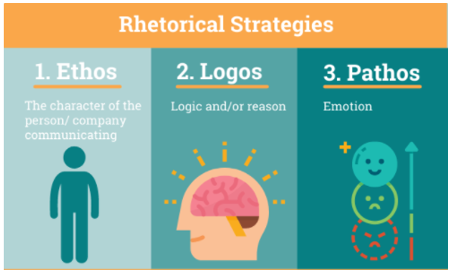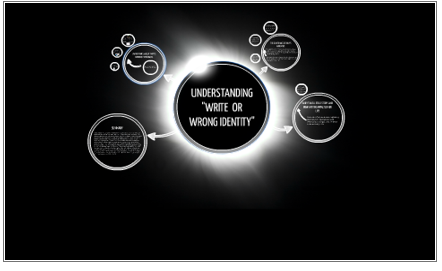CMM 211G : Rhetorical Strategies In Emily Vallowe Write Or Wrong Identity
Jan 31,22CMM 211G : Rhetorical Strategies In Emily Vallowe Write Or Wrong Identity
Question:
International student, so my English is not good. You don’t have to use the big word just the simple sentences. just write it in a clear meaning or sentences. This assignment is about an analysis of the article in the book page 73-79. I also provide the instruction and the example of this assignment.
Answer:
Introduction
Student name:
Student ID:
Module name:
Table of Contents
Introduction. 3
Case study on Emily Vallowe write or wrong identity. 4
Conclusion. 5
Reference list 6
Introduction
In Emily Vallowe’s wrong or write identity, she has applied a rhetorical steady to analyse her identity. Emily Vallowe is a writer and this analysis is mainly done to identify her qualities and capabilities as an academic writer. Emily Vallowe in this article recalls when during her kindergarten days her teacher identified this particular quality in her and it has become a very integral part of her existence. Throughout this entire essay, Emily Vallowe keeps on asking the same question to herself whether this quality she possessed from her birth or was it magnified and developed in her after her teacher pinpointed this quality in her. The structure of this particular article indicates that Emily’s text is a journal that is self-focused. With the help of the article, Emily Vallowe intends to shed light on the minds of readers to critically think about their skills and talents and the way their skills and talents have developed or if their skills and talents are gifted by God to them right from their birth.
Rhetorical analysis

Figure 1: Rhetorical strategies
Source: (Prowritingaid, 2022)
In order to highlight the importance of self-reflection that every reader or writer must do, Emily Vallowe has applied various rhetorical strategies. The first rhetorical technique that she has in her article is simplified diction and she applies it throughout her essay. The words that are used in this essay are very simple so that readers can easily understand what she wants to convey (Varpio, 2018). This article is very impactful and remarkable and it mainly emphasises a very common matter ‘talent’ and describes it in a very critical and complex manner. She intends to highlight the complexity of this simple yet complicated attribute. Emily Vallowe throughout her entire article has applied various rhetorical techniques which had made this article more thought-provoking and interesting. The way she has discussed this matter has compelled the readers to question themselves and self-reflect on their talents and skills. Wallow has used many monologues to dive deep into the minds of the raiders so that they will understand her inner thoughts more clearly and will also clearly understand what she wants to convey through her article. She aims to engage in a deep self-reflection to identify her skills as a writer (Becker, 2018). She also has apple personifications in order to describe some specific attributes and this has made her article easier and clear for readers to understand. The way she has incorporated simplified diction and stylistic devices has enabled Emily Vallowe to get a more effective delivery of her thoughts and ideas to the minds of the readers.
Case study on Emily Vallowe write or wrong identity

Figure 2: Write or wrong identity
Source: (prezi, 2022)
In this article, Emily Vallowe starts her article with a set of questions that she asks herself in order to identify her talent. She discusses an incident when her kindergarten teacher told her that she has the qualities of a skilled writer. Although Emily Vallowe in her childhood was fascinated by what her teacher said, as she grew up this thing concerned her more than she manifested (Slepcevic-Zach & Stock, 2018). She keeps on asking the same question throughout her entire article if she truly can identify her talents as a writer, if she is a skilled writer or if she is a writer only because of the fact that her kindergarten teacher pinpointed this quality in her. She reflects on herself and questions herself that if she is not a good writer then what is she good at if there are any other things where she can excel. In her article, it is clearly evident that she is very concerned about the fact that maybe she is not an efficient writer and some of their career ventures will be better for her than being a writer. Her article has used very simple words so that more raiders can easily understand what she wants to convey. With the help of an article, she aims for the reader to critically think about the skills and attributes that they are good at (Falon et al., 2021). She wants to assist her raiders to make effective life decisions and to carefully evaluate the things that they are good at. She wants to convey this message to her readers that they should keep questioning their career choice. Her readers should self-reflect so that they can understand if they are good at what they are doing and if not what is the one thing that they will be able to do better. She puts a lot of emphasis on the fact that her readers should try to identify their qualities and skills. This particular article has helped many readers in self-reflecting. Many readers have also appreciated this article as this article helped them in identifying their true qualities. The way she has structured her article and the use of strategic rhetorical techniques has allowed Emily Vallowe to better connect worthy readers. She has been successful in diving deep into the midst of her readers in such a way that has compelled the readers to self-reflect (Lee &Canagarajah, 2019). Emily Vallowe understands that in order to reach out to more readers, she will have to form her sentences in such a way that will be easier for the readers to understand but will also be impactful and of high quality. She has effectively applied a handful of rhetorical techniques to reflect on her personal experiences so that readers can connect with her on a deeper level.
Conclusion
After analysing the entire essay, it can be concluded that this article by Emily Vallowe is a very thought-provoking and impactful article. Through this article, Emily Vallowe has narrated her childhood experiences and how those experiences are still playing a very important role in her decision-making part. She has effectively connected with the readers with the help of rhetorical techniques that she has applied in her article and with the use of easy and simple words. Readers of this article have highly appreciated it and they have also been able to self-reflect and identify their qualities and skills. She has discussed in detail her personal experiences so that readers will be able to relate and engage with her.
Reference list
Becker, T. (2018). What We Still Don’t Know About What Persuades Judges-And Some Ways We Might Find Out. Legal Writing: J. Legal Writing Inst., 22, 41. Retrieved from: https://repository.law.umich.edu/articles/1977
Falon, S. L., Karin, E., Boga, D., Gucciardi, D. F., Griffin, B., & Crane, M. F. (2021). A clustered-randomized controlled trial of a self-reflection resilience-strengthening intervention and novel mediators. Journal of occupational health psychology, 26(1), 1. Retrieved from: https://www.researchgate.net/profile/Monique-Crane/publication/344970419_A_clustered-randomized_controlled_trial_of_a_self-reflection_resilience-strengthening_intervention_and_novel_mediators/links/5f9b8097a6fdccfd7b8a70b9/A-clustered-randomized-controlled-trial-of-a-self-reflection-resilience-strengthening-intervention-and-novel-mediators.pdf
Lee, E., & Canagarajah, S. (2019). The connection between transcultural dispositions and translingual practices in academic writing. Journal of Multicultural Discourses, 14(1), 14-28. DOI: https://doi.org/10.1080/17447143.2018.1501375
prezi. (2022). English Fall 2013. prezi.com. Retrieved 20 January 2022, from https://prezi.com/dhll3nfrdbh6/english-fall-2013/.
Prowritingaid. (2022). What Is a Rhetorical Analysis and How to Write a Great One. Prowritingaid.com. Retrieved 20 January 2022, from https://prowritingaid.com/art/2364/rhetorical-analysis.aspx.
Slepcevic-Zach, P., & Stock, M. (2018). ePortfolio as a tool for reflection and self-reflection. Reflective Practice, 19(3), 291-307. Retrieved from: https://www.tandfonline.com/doi/pdf/10.1080/14623943.2018.1437399
Varpio, L. (2018). Using rhetorical appeals to credibility, logic, and emotions to increase your persuasiveness. Perspectives on medical education, 7(3), 207-210. Retrieved from: https://link.springer.com/article/10.1007/s40037-018-0420-2





